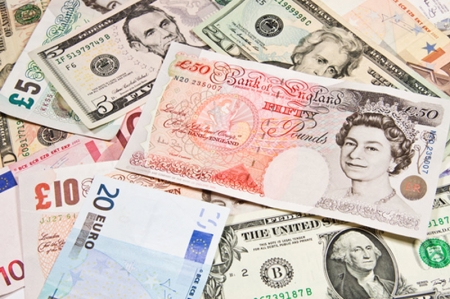Investing.com – The U.S. dollar rose in European trade Thursday following hawkish comments from a Federal Reserve official, while weak economic data weighed on the euro and sterling.
At 05:30 ET (09:30 GMT), the Dollar Index, which tracks the greenback against a basket of six other currencies, traded 0.3% higher at 104.320, near the highest level since mid-February.
Dollar boosted by Waller’s comments
The greenback has been in demand after Fed Governor Christopher Waller said, in a speech at an Economic Club of New York gathering late Wednesday, that recent disappointing inflation data affirms the case for the U.S. central bank holding off on cutting its rates in the short-term.
“There is no rush to cut the policy rate” right now, Waller said, as recent data “tells me that it is prudent to hold this rate at its current restrictive stance perhaps for longer than previously thought to help keep inflation on a sustainable trajectory toward 2%.”
“The speech will have been a disappointment to dollar bears who might have been hoping for some reassuring confidence on the disinflation process and some further discussion of the seasonal problems with the firm January inflation data,” analysts at ING, in a note.
There is more economic data to digest Thursday, including weekly , fourth-quarter data and .
The main focus, however, will be on Friday’s release of the Fed’s favorite inflation gauge, the , when the market is shut for Good Friday.
Sterling, euro slump
In Europe, fell 0.3% to 1.0789, near its lowest in five weeks, after data released earlier Thursday showed that unexpectedly fell 1.9% on the month in February, illustrating the difficulties Europe’s largest economy was suffering in the first quarter.
European Central Bank officials have become very dovish of late, with board member Piero Cipollone the latest to hint at interest rate cuts as soon as June.
“Wage growth appears on track to gradually moderate in the medium term towards levels that are consistent with our inflation target and productivity growth, in line with the projections,” Cipollone told an event in Brussels on Wednesday.
“As our confidence in the timely convergence of inflation to our target grows, it also strengthens the case for adjusting our policy rates,” Cipollone said.
fell 0.3% to 1.2603, after data confirmed that the U.K. economy went into a shallow recession last year.
The country’s shrank by 0.1% in the third quarter and by 0.3% in the fourth, unchanged from preliminary estimates, meaning two consecutive quarters of negative growth.
Britain’s economy has shown signs of starting 2024 on a stronger footing, with monthly GDP growth of 0.2% in January, but with inflation slowing the Bank of England is moving towards the point where it can start cutting rates.
Yen on intervention watch
traded 0.1% higher at 151.41, after surging as high as 151.97 on Wednesday – its strongest level since mid-1990.
Japanese authorities held a meeting on Wednesday on the currency’s weakness and ramped up their verbal warnings, meaning that speculation is running rife that intervention is close.
Japan intervened in the currency market three times in 2022, selling the dollar to buy yen, first in September and again in October as the yen slid towards a 32-year low of 152 to the dollar.
rose 0.1% to 7.2295, with the pair remaining well above the 7.2 level even as the People’s Bank of China set a substantially stronger-than-expected midpoint to stem more losses in the yuan.








